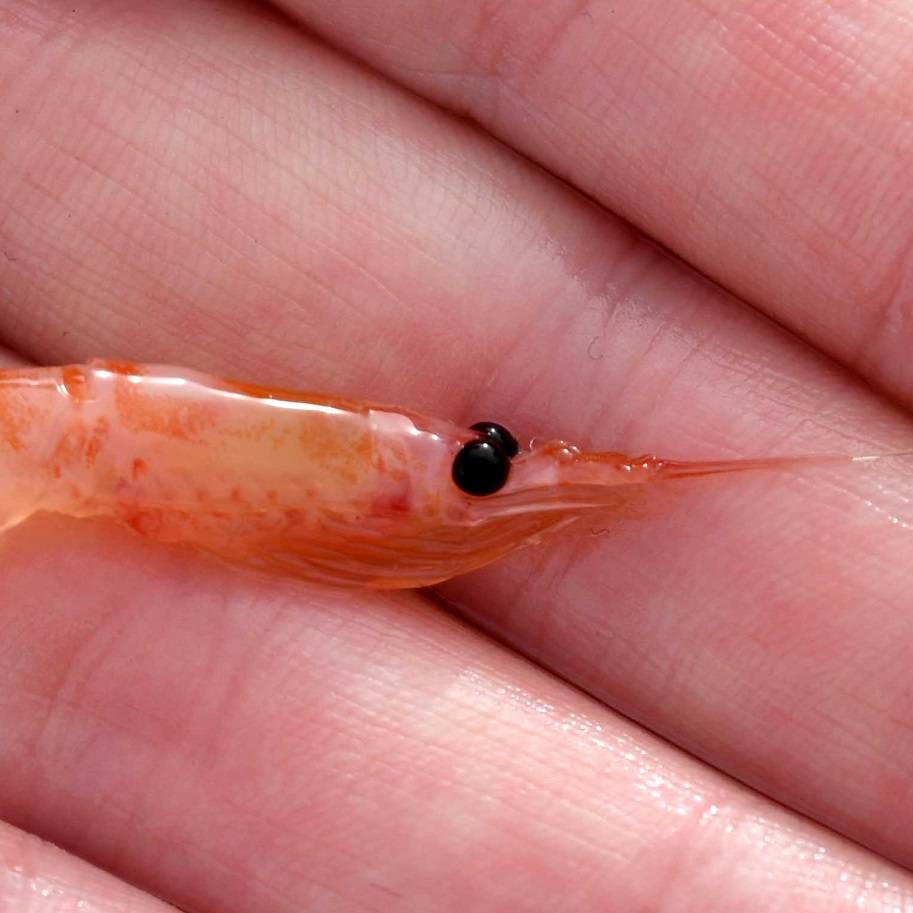About Antarctica

By Jaimy de Vries
Not only got I to enjoy and explore Antarctica and its wildlife. We also got lots of interesting lectures on the boat. Most of the lectures were hold while we were sailing on the Drake Passage. It was a challenge to attend them all and another to stay awake during the lectures. Because of the sea-sickness-meds you’re so sleepy all the time. But I stayed awake, I wouldn’t want to miss these interesting lectures. The lectures were about the history and geology of Antarctica, Icebergs, Seals, Whales, Kril and Jellyfish.
Crystal dessert
Antarctica is the seventh continent (the fifth largest continent). It’s the highest, driest, windiest and coldest continent. Ice covers 98% of the land mass and 90% of ice is in East Antarctica. Antarctica is actually called a dessert. I was very surprised hearing this, because if I imagine a dessert I conjure images of rippled sand dunes and shimmering heat. So how is it possible that a cold, ice-covered continent like Antarctica is a desert? A desert is defined by the amount of precipitation (rain, snow, mist and fog) in an area. And it doesn’t rain or snow a lot in Antarctica. A region that receives very little precipitation is classified as a desert. There are many types of deserts, including subtropical, coastal and polar deserts. What they all have in common is a barren, windswept landscape, which makes it difficult for plants and animals to gain a foothold on land. This all certainly applies to Antarctica.
Our expedition was to the Antarctic Peninsula, the warmest and most humid part of Antarctica. The Antarctic Peninsula lies just 1000 kilometers (621 miles) from the southernmost tip of South America. Lick a beckoning finger the peninsula extends towards South America, inviting travelers to discover the unearthly beauty of the Seventh continent. Across the unpredictable Drake Passage, Antarctica’s most accessible mainland area contains everything one might expect to experience in Antarctica: Huge Icebergs, Penguin species, abundant seals and several whale species. The peninsula is highly mountainous, its highest peak rises to approximately 2800 meters (9186 feet). There are about 90 possible visiting sites in the region of the peninsula, we’ve seen seven of them.
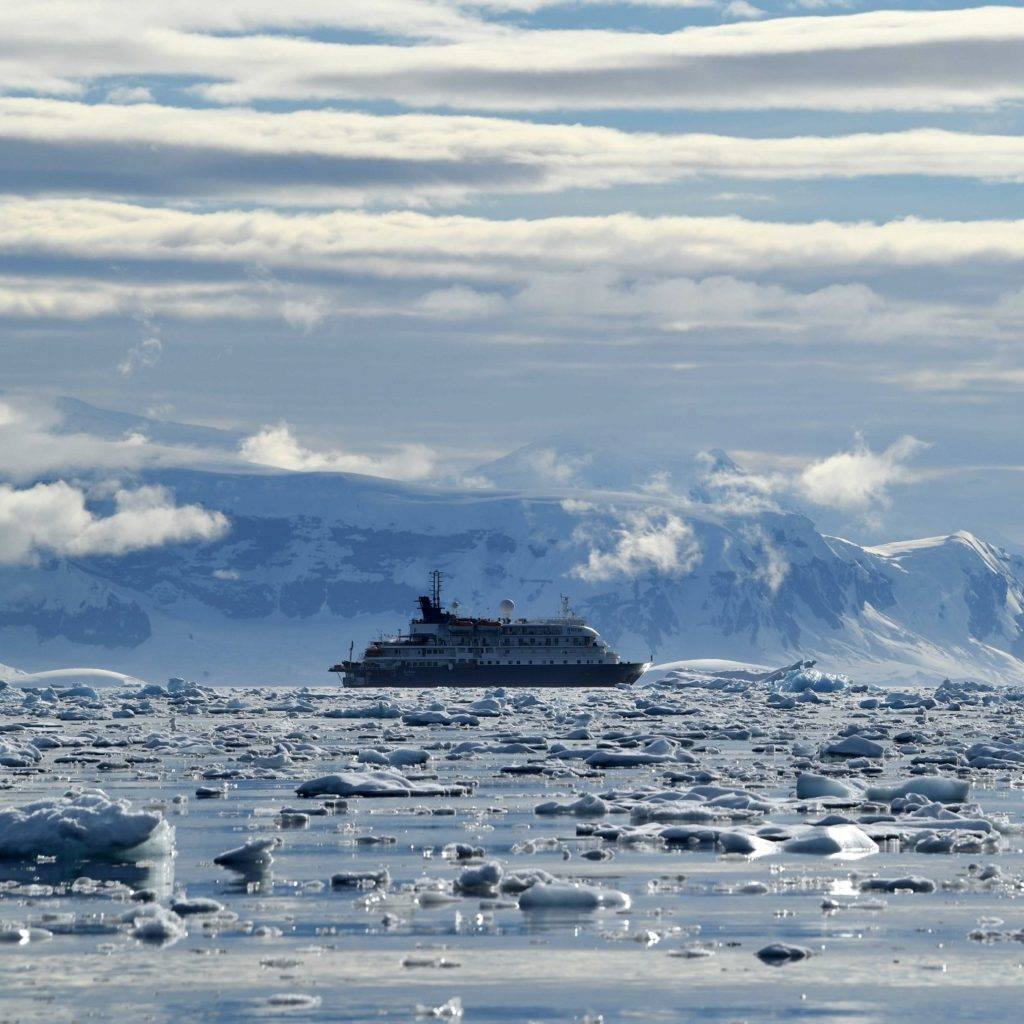
The Antarctica Ice sheet as we know it today was formed around 34 mya. Antarctica was part of Gondwana continent (before it broke 200 million years ago) and had experienced a tropical and temperate climate with lots of different species. Proof show that there was a rainforest in Antarctica a long long time ago.
There are lots of biological process around Antarctica, for example the ice water – it increase and surrounds the continent in the winter and in the spring it melts what makes it accessible for people to go to Antarctica. I also learned that there are many wind and current directions caused by the magnetic poles and difference between cold-warm temperatures.
Antarctica belongs to no country, but there is a treaty signed by twelve countries whose scientist had been active in and around Antarctica. There are no permanent residents in Antarctica, because its too cold for people to live there for a long time. But there are researchers wo (temporary)live in Antarctica. There are 1000 researcher in the winter, and around 4000 in the summer. Tourists visit Antarctica in the summers. The oceans around Antarctica are home to many types of whales. Antarctica is also home to seals and penguins.
History of Antarctic Exploration
Let me tell you a bit about the exploration history. Around more than 200 years ago sailors, like James Cook, tried to sail to the south in search of the fabled southern continent. The sea is rough and the weather conditions are challenging, especially around that time. Their ships were made of wood, not made to break ice. He did not find the southern continent, but he discovered the South Georgia Island and was the first one to cross the Antarctic circle. Eventually James Cook proved that there is a southern continent, but was not the first one who discovered the seventh continent. It was von Bellingshausen, a Russian explorer, who first sighted Antarctica on January 1820.
Around 1800 lots of seal skins were taken from South Georgia and other islands like Falkland. The whalers came south too. The seals (and whales) where nearly to extinction. Sealers and whalers wanted to find new hunting grounds, so they funded exploration boats. One of these “Sealers-scientist” was James Weddel. As a result new islands were discovered and thousands of miles of new coastline. The outlines of the new continent began to take shape. Inspired by Weddel’s deep foray into the Weddel Sea, the French, Britisch and U.S. governments launched scientist and explorers to an exploration mission to discover new lands and locate the South magnetic pole. This was between 1800-1900 and around 1900. Big names during this heroic age of exploration was Shackleton, Gerlache and Amnundsen. Eventually a map was formed and we know a lot more about Antarctica!
It seems ironic that the severe weather that makes the Southern ocean so dangerous, particularly in the South Atlantic, was a key factor in the discovery of Antarctica. Time and time again, sailors blown off course by a storm discovered new land. Often, this new land was farther south than any previously known.
Ice ice baby
Let talk about Icebergs! An Iceberg is frozen water floating on liquid water. Iceberg floats because of the air bubbles in them. When it’s bigger than 5 meters you can call it an iceberg, otherwise its just some ice floating in the water. There are several ways Iceberg can be formed. 1) It can happen when glaciers are covered in snow and they reach the water, they calve. 2) Or when ice shelfs are calving due to the salt water underneath. There are lots of sizes and shapes. The waves and tides, elements makes the shape of the iceberg. People like to categorize things, so they made a list of the most common types of icebergs like: pinnacle or blocky iceberg for example. The Icebergs (and glaciers) looks so intense blue. That is because the ice is so dense. There is more water density and less air in the ice, with the reflection of the sun and the water creates the blue color.
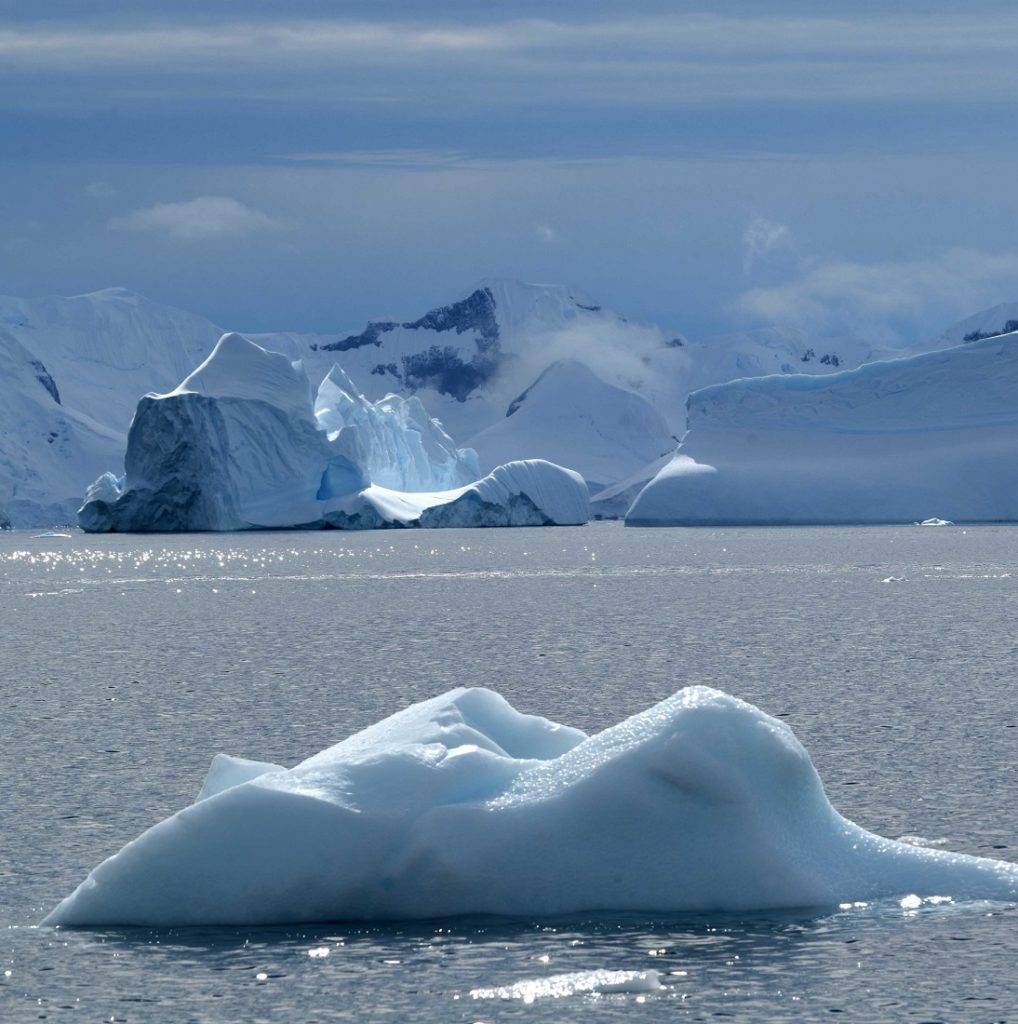
Icebergs can be very dangerous. We were not allowed to get real close, and definitely not walk on them. It’s because you can only see around 20% of the iceberg on the surface, the other 80% is in the water. When an Iceberg gets top heavy it can roll over what causes big waves and breaking ice. If your really close to an iceberg that’s going to flip over on your side, you’re dead.
Penguins
If you ask somebody five things about Antarctica, one of then surely will be penguins. Because there is so much to say about these funny animals, I devoted an entire post about them. Click on the link below to read more about penguins.
Whales
There are several whales species you can find in the Antarctic Peninsula. The common whale species include the Humpback, minke and killer whale. Sightings of blue, fin, sei, southern right and sperm whales are not as common. On our expedition we saw the humpback whale and the minke whale. I think whales are one of the most fascinating creatures on the planet. There so big , they can have a length of more than 100 feet and a weight up to 200 tons – as much as 33 elephants. And they look like they come from an ancient time. They’re kind creatures too and can be really curious or shy. It’s just so sad that six out of the 13 great whale species are classified as endangered or vulnerable. Due to the excessive hunting in our history, and still after decades of protection there endangered.
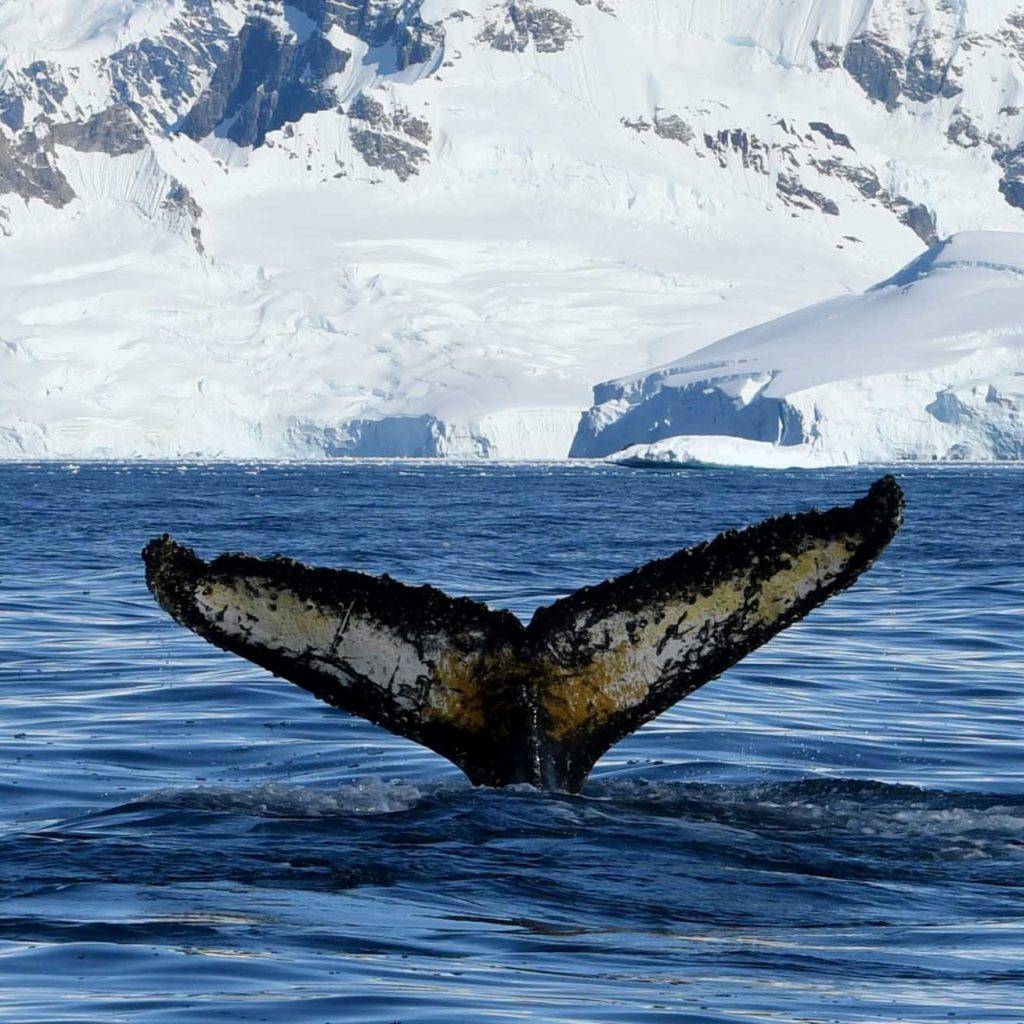
An estimated minimum of 300,000 whales are killed each year as a result of fisheries bycatch, while others succumb to a myriad of threats including shipping and habitat loss.
Despite living in the water, whales breathe air. And like humans, they are warm-blooded mammals who nurse their young. A thick layer of fat called blubber insulates them from cold ocean waters. Whales have an open chest. That’s why when whales get accidentally on shore they die quickly, because all their weight is on their chest and because its open there is lot of weight on their organs and so their lungs. Whales mainly eat krill and plankton. Whales roam throughout all of the world’s oceans, communicating with complex and mysterious sounds. It’s called a whale song. They don’t have vocal cords, but whales produce sounds by squeezing air through their larynx as well as through complex systems of air sacs near the blowhole. Every song is different, scientist have not measured one song twice. These songs are amazing, I feel so calm and relaxed when I put on a music track of whales song. That’s why I want to share with you this video where they captured a whale song.
I think whales are one of the most fascinating creatures on the planet. There so big , they can have a length of more than 100 feet and a weight up to 200 tons – as much as 33 elephants. And they look like they come from an ancient time. They’re kind creatures too and can be really curious or shy. It’s just so sad that six out of the 13 great whale species are classified as endangered or vulnerable. Due to the excessive hunting in our history, and still after decades of protection there endangered. An estimated minimum of 300,000 whales and dolphins are killed each year as a result of fisheries bycatch, while others succumb to a myriad of threats including shipping and habitat loss.
Seals
There are two natural groups of seals: true and not-true (eared) seals, the latter group contains fur seals and lion seals. In fact all seals have ears, but “ eared” seals differ in having a small external ear rather than just a small aperture on the side of the head. Depending on the species, they feed on fish, squid and or krill. The leopard seal is also a predator for penguins and other seals. Seals have, just like whales, a thick layer of blubber beneath their skin act as food reserve or insultation. Seals only leave the water to breed, rest and molt. Of the six Antarctic species, four are ice habitat specialist, breeding on the sea in spring. Leopard and ross seals tend to be solitary, whereas Weddel and crabeater seals form loose breeding aggregations.
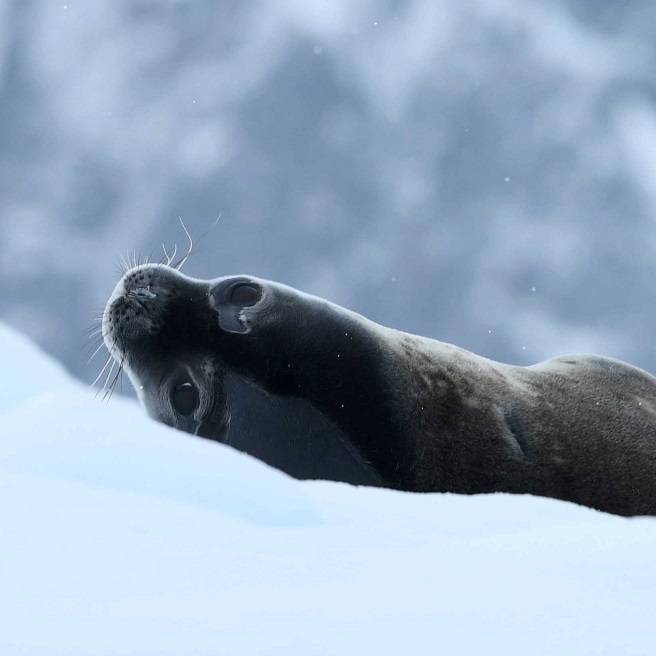
Antarctic fur seals and southern elephant seals ae both found north of the pack-size zone and breed in dense colonies on beaches. Here, dominant males maintain harems of females in territories. In constantly defending these, bulls will not forage at sea, relying instead on blubber reserves laid down in the previous winter. Seals spend much of their time under the sea ice in Antarctica, approximately around 80%. From the 80% of the time they’re in the water, of them they eat 90% of the time. Antarctic seals have no native terrestrial predators and therefore behave very differently from the northern hemisphere seals. They show little fear of humans.
Seals are impressive divers, although they breath air they can, depending on the species, dive up to 2389 meter depth for 95 minutes (elephant seal). How can they do that!? Well they have hypoxia adaptation, what means that their heart beat reduces, there is no blood going to their perific system, they have 3 times the blood volume of humans and 1,5 times more hemoglobin.
We were watching a fur seal, while we were on a zodiac cruise in Wilhelmina bay, that was really interested in us. He was posing for us while we floated around his iceberg. But then when we decided to head back to the cruise ship. The fur seal followed us and was swimming around our zodiac. I had my go pro with me and tried to make some shots underwater. And I was able to get some great shots of him. Check the photo on your right (down on mobile modus).
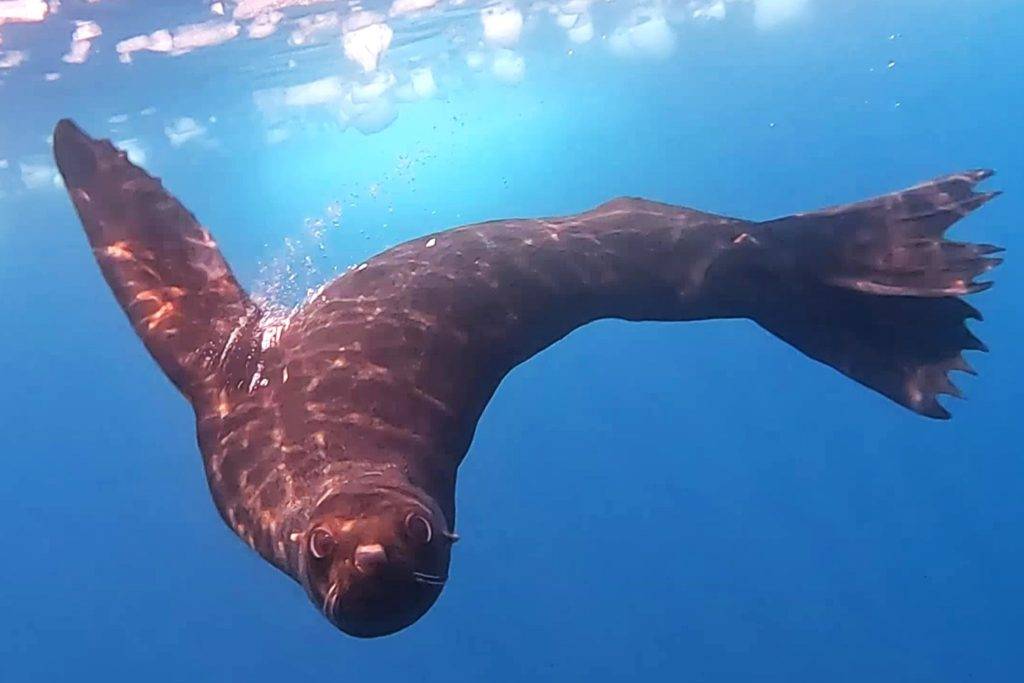
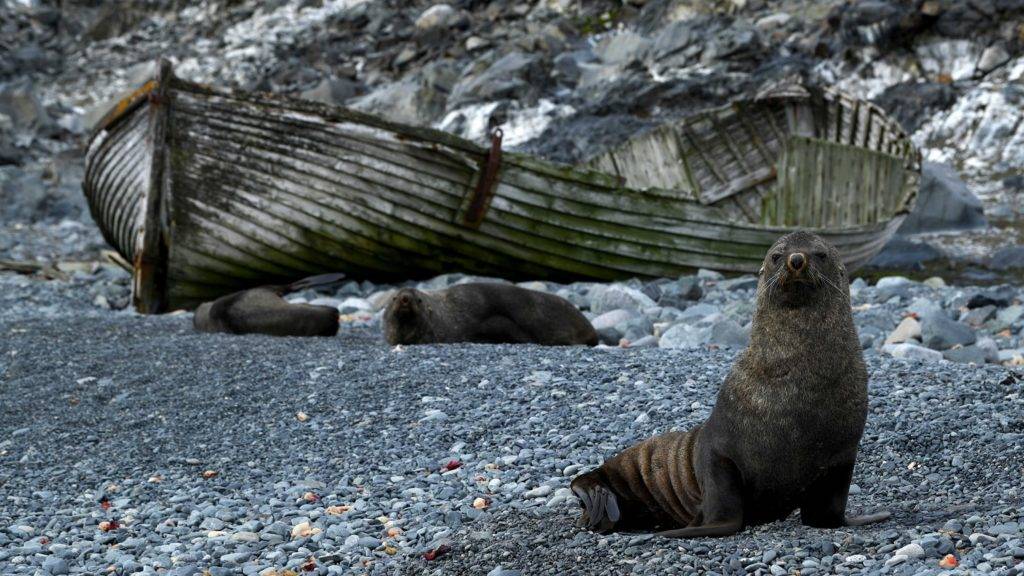
Fur seals on the beach
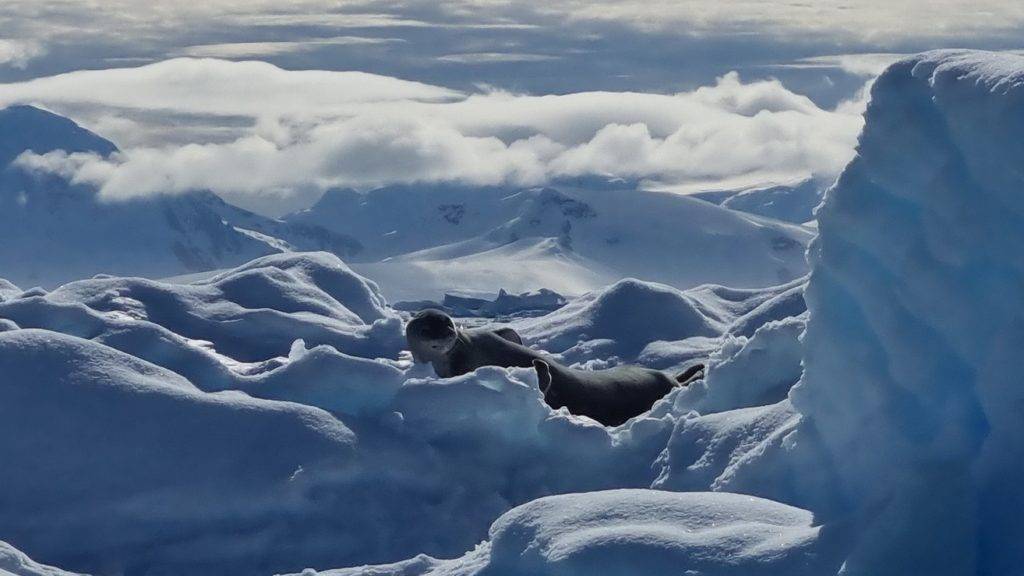
A weddel sea in clouds of ice

A weddel sea
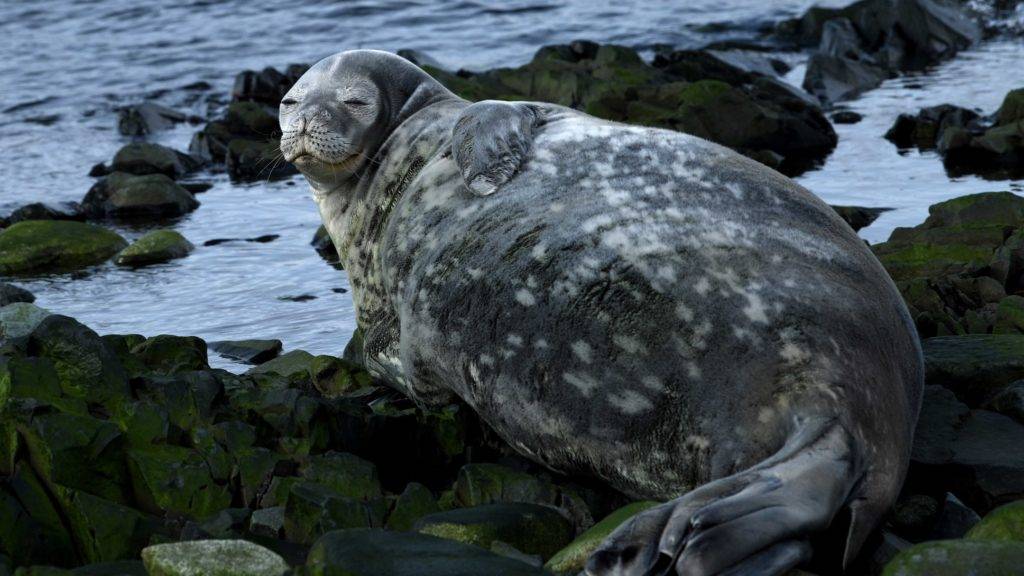
Weddel seal chilling on the beach
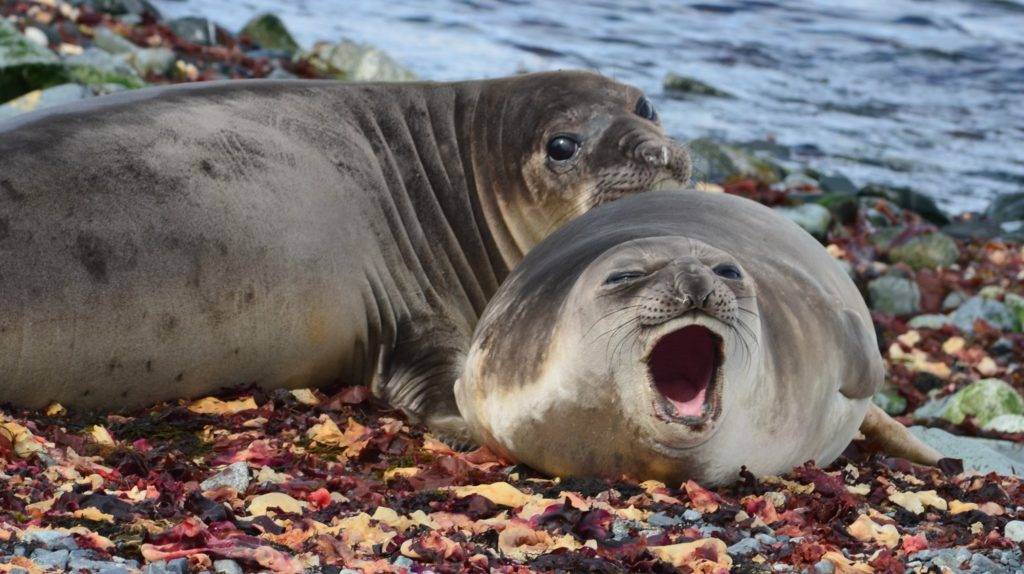
Sleepy elephant seals
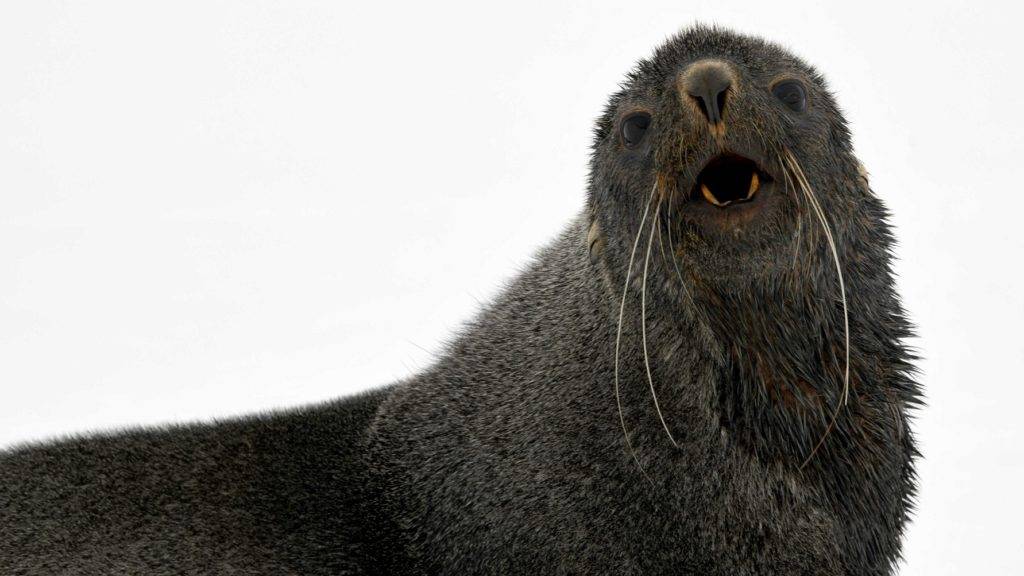
Angry fur seal
Kril
On the bottom of my post and on the bottom of the food chain. Well I’d rather be an ant than a krill. Everything in Antarctica eats krill. Krill means whale food in Latin. Krill lives from algae, especially from ice (bergs of shelfs).. Krill is on the bottom of the food chain and therefore really important. It is important for the survival of whales, seals penguins and other birds. There is a lot of krill in the world. The biomass of krill over the world is more than the biomass of humans on the world. But now because of global warming and fishery krill is in danger. People started to fish for krill because it has many beneficial health effects. So it’s a big danger for us and the wildlife. We must be careful buying products that carries krill, otherwise all species living in Antarctica will extinct.
